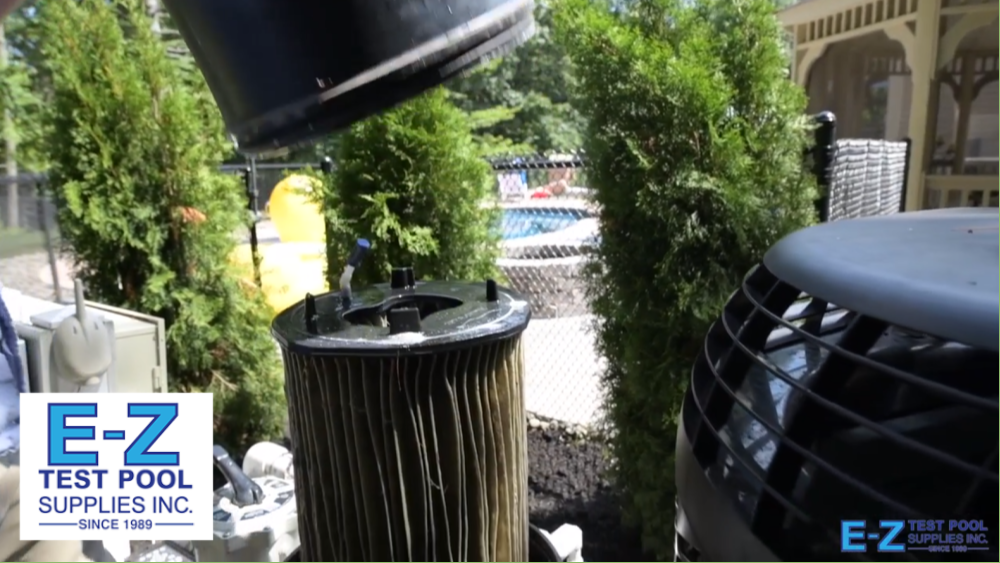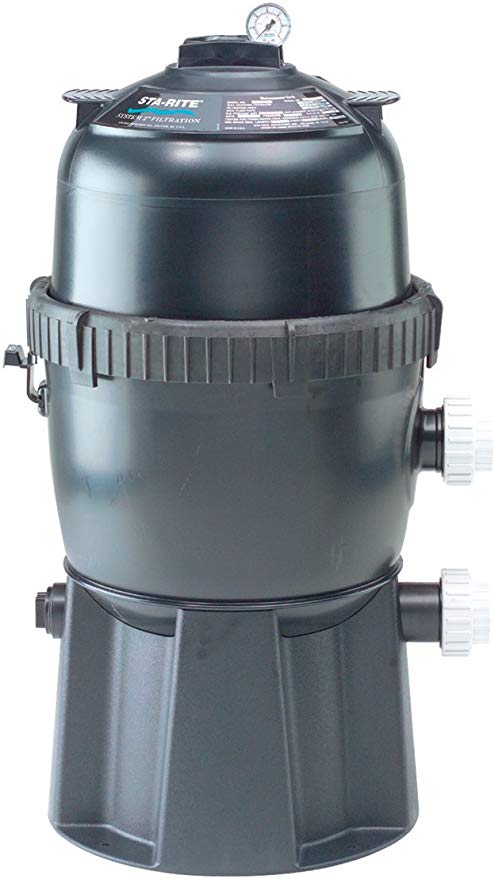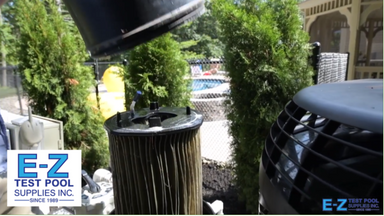Published by Matt Fichera on 01/16/2020
How to Manually Clean a D.E. Pool Filter

If you want crystal clear pool water, you’ll want to adhere to these best practices in caring for your pool.
In this blog and accompanying video, we’re going to work on manually cleaning a PLDE 48 Sta-Rite D.E. Filter. This same process also works with PLDE 36 and PLDE 30 filters.
If your pool pump is running, you’ll want to start by turning it off.
The first thing that you’ll want to do is release the air from the top knob by spinning this counter-clockwise. You should hear the hiss of pressurized air escaping as the tank is drained.
Because the PLDE 48 by Sta-Rite is a cartridge filter we have the ability to manually clean it or you can also clean it by using the “backwash” position on the filter valve.
Because this system exists and operates in the northeast and has been running for 3 months, it’s time to give it a good wash.
To take your D.E. filter apart, we’ll start by draining the tank. In our case we’re locating the drain plug and using a small screwdriver as a wedge. A few counterclockwise spins remove the one-and-a-half-inch plug and the tank itself will start to drain the excess water.
Next, find the circular clamp located on the middle exterior of the filter that goes all of the way around. Somewhere along this track will be a lever that you’ll need to depress down and away. This is the release that will allow you to turn the circular clamp. Turn this counter-clockwise. It’s threaded and will come off its thread so that you can remove it up and over the filter. Removing this should be fairly easy with little to no resistance.
The Sta-Rite brand allows you to then you the built-in inside tab instead of a screwdriver. Locate the grooves in the plastic along the same line as the thread, insert one of the tabs into the selected groove and turn it up. You may need to do this with several of the grooves in order to loosen and separate the exterior filter parts.

Once the halves are popped, go ahead and remove the top by bring it straight up and over and exposing the internal filter element.
Despite backwashing, rinsing, and cleaning, there is still a residual that will need to be taken care of with a manual cleaning. These cleanings are necessary usually every 90 to 120 days that the pool is in use.
We now have a clean filter cartridge that we’ll want to place back into the filter in the correct way.
Take a look at the bottom of the filter and located the circular hole, and line it up with the circular hole located at the bottom of the tank. If you now take a look at the top of the filter cartridge there’s an arrow located there which should be in line with the circular hole on the bottom of the cartridge and the hole on the bottom of the tank. This is how you will know that you put the filter back into the tank correctly. You can rock the filter a bit just to ensure that it’s in place.
Reattaching the two halves of the external tank can sometimes be tricky. Some older tanks may call for the use of lube in this case. This tank is fairly new so the halves will easily slide together. We do carry a couple of different brands of lube available for purchase if needed.
Reconnecting the top half of the external tank has no specific way of reattaching. We would suggest selecting the way that is most convenient to be able to view the pressure gauge. Once this is selected, press down on the top of the tank and check that there is no visible seam at the thread line. No visible seam ensure that it went on correctly.
Next, take your clamp, put it back over the top and spin in clockwise on the thread until it locks down. It will in fact make a clicking sound when it correctly locks.
You’ll want to reinstall the plug on the bottom of the tank. This is that same inch and a half-threaded plug which you’ll want to spin clock-wise to screw it back into the drain. Once it’s hand tight you can use a wedge or a screw-driver for a half to a quarter turn making sure it’s firmly back in place.
Now we can turn our pool pump on. If it’s a variable speed model, it may take a moment to cycle up. Look to the top of the filter tank and tighten down the air bleeder by turning it clockwise. The pump is going to finish priming and the bleeder valve will start to shoot out air.
The delay in the motor starting up and cycling is normal for a variable speed pump this won’t take as long with other types of pool pumps.
The pump pulls water, cycles, and you bleed air until the point where water is now coming out of the air relief valve. This is when you can close the valve completely.
The tank is now nice and clean. The pressure gauge is down around 12 pounds, and prior to starting this process the filter had been running between 18 and 20 pounds. 6 to 8 pounds of pressure were lost after the cleaning process was completed. This means that there is more flow through the filter. Low pressure is always indicative of more flow and the higher the pressure the lesser the flow which is indicative of more resistance.
Now we have to add more D.E. powder back to the system through the skimmer. For the PLDE 48 Sta-Rite D.E. Filter we use 6 scoops of D.E. powder to recharge it.





